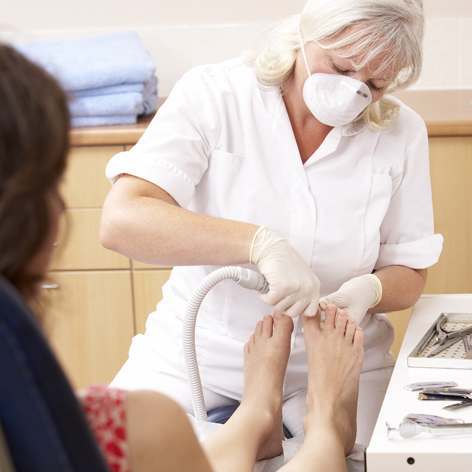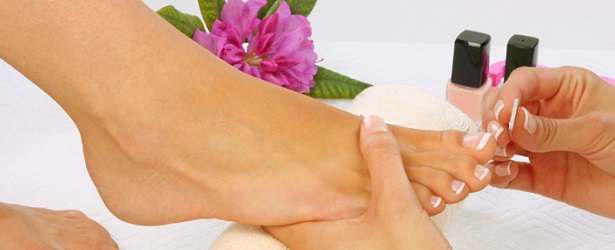
3 Ways to Identify Fungal Infections
A fungal infection can show up on any part of your body, including your skin, nails, and hair. To start diagnosing the type of fungus that plagues you, you have to figure out what is causing the problem. When you know what the different types of fungus look like, you can stop infections from happening again, and you can prevent more serious, internal infections.
 Athlete’s foot strikes people most often. You will usually see this on the skin of your feet. One of the telltale indications that you have athlete’s foot is wetness on the soles of your feet or the skin between your toes. The skin will look puffy and swollen and will also be red. Along with the redness, there may often be an itching or burning sensation.
Athlete’s foot strikes people most often. You will usually see this on the skin of your feet. One of the telltale indications that you have athlete’s foot is wetness on the soles of your feet or the skin between your toes. The skin will look puffy and swollen and will also be red. Along with the redness, there may often be an itching or burning sensation.
Usually, you can treat athlete’s foot with over-the-counter medicines. If the infection does not go away after about seven days, you need to call your doctor.
Another common infection is jock itch. This generally arises in the armpits or the groin. It can also strike the skin under the breasts. Usually, this fungal infection is caused due to sweating on hot, humid days or during strenuous exercise. Cornstarch powder can be dusted in the creases or folds of your skin to keep you dry and prevent infection.
Ringworm is most commonly found on children. Kids usually catch it from an animal or coming into contact with someone who is infected. Ringworm usually looks like a circle on the skin. It will usually start as a red bump but then it will grow into the more recognizable circle. Left untreated, it will keep getting bigger. Usually, you can treat ringworm with over-the-counter anti-fungal creams that can be rubbed onto the skin. You will want to continue using the cream for an additional fourteen days after the rash has disappeared. If the ringworm is on the scalp or is all over the body, you may need to see your doctor for oral medication.
 Keep an eye on your nails
Keep an eye on your nails
Infections on your nails are more commonly seen in adults than children. Keep an eye out for the nail thickening. The nail will start to turn a creamy, yellow, or opaque color. If the infection is left untreated for long enough, patches and small streaks may appear, and the color of the nail will get even darker.
People with diabetes or vascular diseases will be more likely to develop a secondary bacterial infection, especially if they often get fungal infections on their skin or in their nails.
Doctors may prescribe 3 months’ worth of oral medication for toenail infections. Medicine need only be taken for 6 weeks to treat fingernail infections.
Consulting your doctor
When in doubt, call your physician. A lot of skin problems may take on the appearance of a fungus, and only your doctor will know the difference and be able to treat your issue accordingly. To diagnose your skin condition, the doctor may use a slide to scrape off some of the infected skin so it can be examined with a microscope. At that point, she can figure out if a fungus is causing your skin issues.
TOP 5
ATHLETE'S FOOTTreatments |
|||||
| Athlete's Foot Clear | Naturasil | Healing Natural Oils | Forces of Nature | DeSensua | |
|---|---|---|---|---|---|
| 1 | 2 | 3 | 4 | 5 | |
| Price (1 bottle) Price (6 bottles) *Best Value |
$49.95 $139.80 |
$31.30 $169.00 |
$29.95 $161.73 |
$34.85 $188.00 |
$23.99 $129.55 |
| Overall Rating | 99.30% | 82.20% | 79.40% | 74.80% | 66.30% |
| Effectiveness |      |      |      |      |      |
| Speed of Results | Extremely Fast | Good | Average | Slow | Slow |
| Quality of Ingredients | Premium | Good | Good | Average | Average |
| Customer Satisfaction Evaluation | 99.10% | 80% | 75% | 74% | 65% |
| Safety Evaluation | Safe for Use | Safe for Use | Safe for Use | Safe for Use | Safe for Use |
| Customer Service Rating |      |      |      |      |      |
| Reorder Rate | Highest | Good | Average | Average | Average |
| Return Policy | Risk Free | Risk Free | Risk Free | Risk Free | Unopened Only |
| Success Rate | 99.20% | 82% | 73% | 73% | 62% |

 Subscribe Now
Subscribe Now











